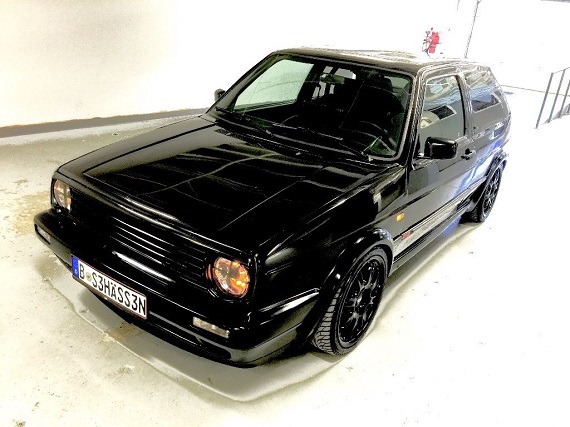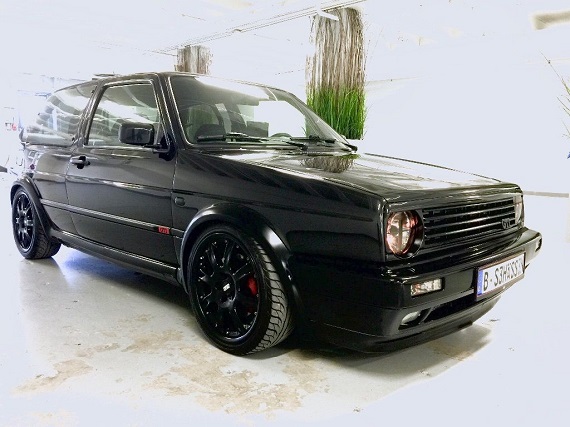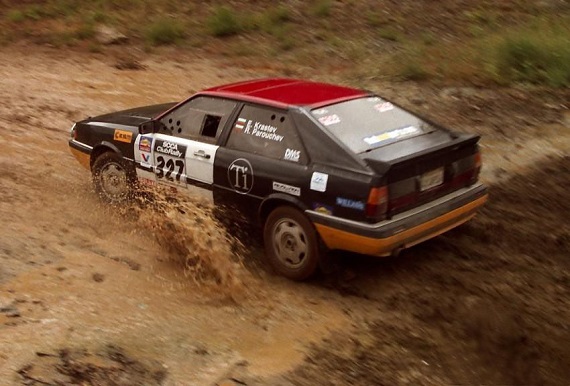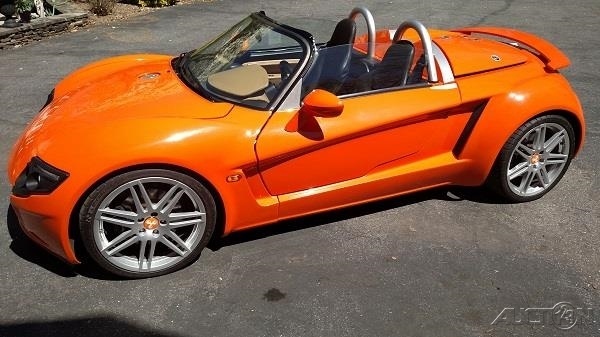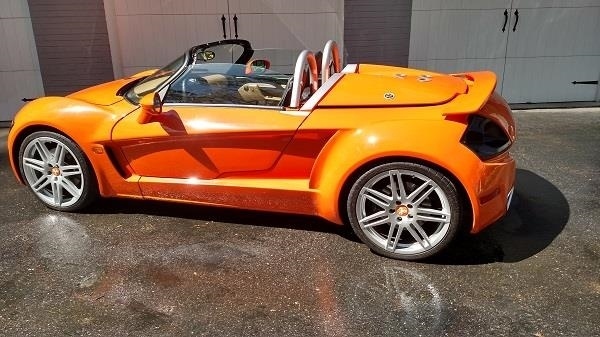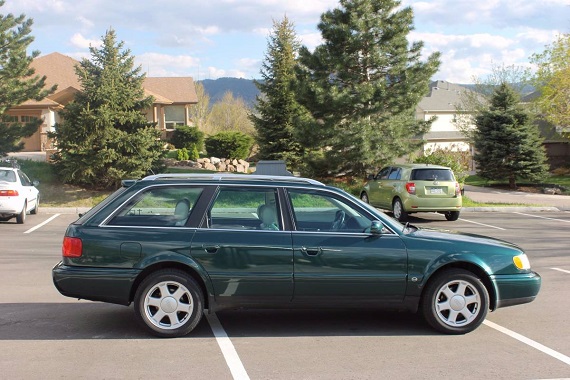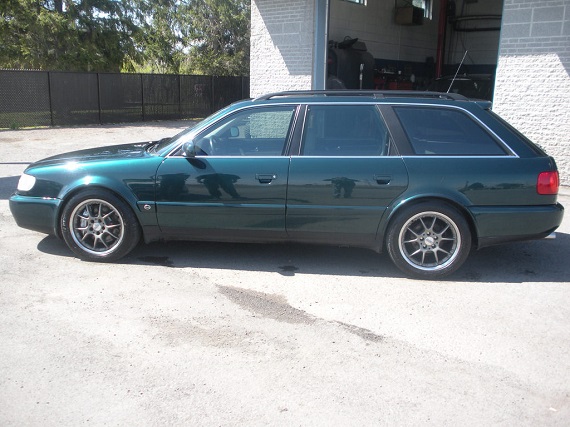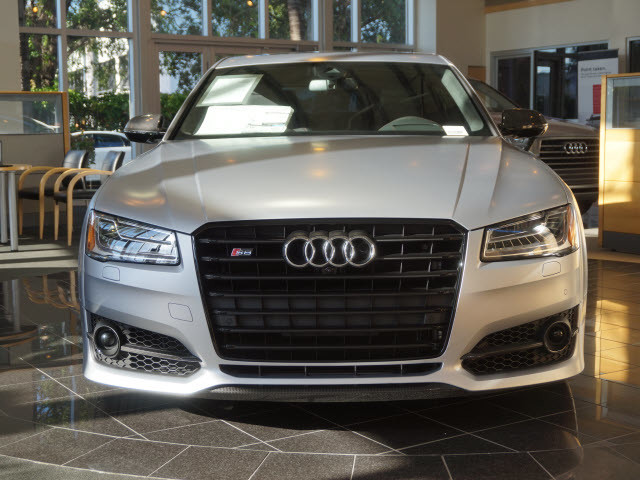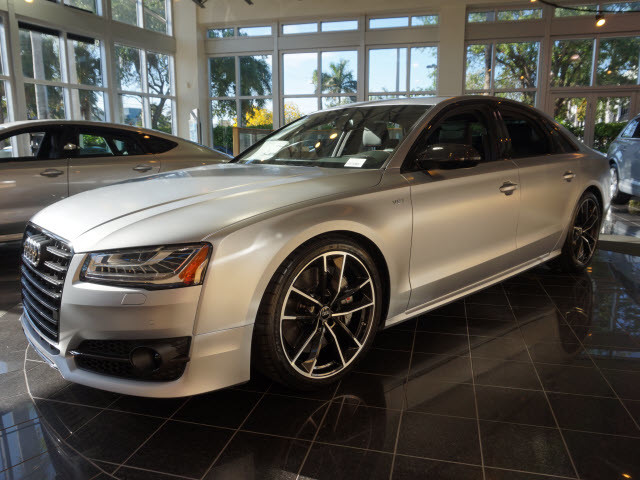The hot hatch may just be the perfect have your cake and eat it too automobile. And though many argue that they weren’t the originator and didn’t produced the best example in the market, Volkswagen’s GTi has been intrinsically linked with the moniker. It always raises an interesting question of which generation is best, and while there are plenty who would contend that the model never got any better than its original configuration, fans of each iteration of the venerable model abound. Like some others that read the blog, I came of automotive age in the midst of the Mk.2 model run. A Mk.2 Golf was also my second car, and as a result I have quite a soft spot for them. In the days before the internet, my knowledge of European models like the Golf Limited was non-existent, so at the time it got no better than the late GTi 2.0 16V. Wider arches, deeper bumpers, fog lights and the signature red striped quad-round grill setup coupled with some great colors like Montana Green. The roof mounted Fuba antenna was like a remote control pickup for fun, and capped with some awesome BBS RM multi-piece wheels and slick looking Recaros, the package might as well have said “Ferrari” on the front. But if the looks of the Mk.2 GTi were the best in the line, quite a few VW souls would point out that the fantastic sounding VR6 model that followed had the performance that really backed up the hot-hatch name. As a result, swapping the VR6 into the Mk.2 has not only become popular but almost a given, and VR swaps are nearly as prevalent as the ubiquitous S50/S52 in a E30 swap. This particular one has been dialed up a few more notches with a turbo, but channels the look of the 2.0 16V with some updates and a whole lot of black paint:
Tag: Turbocharged
Far less famous than its wide-hipped brother and mostly unknown to most U.S. customers, the B2 Audi Coupe was available with quattro all-wheel drive in other markets. It shared nearly all components with the sibling 4000 (90) quattro, including 4×108 wheel pattern and 256mm front brakes – items that were also on the U.S. spec front-drive GT. So, one would assume it would be pretty easy to “swap in a quattro”, as the internet posts usually start. Of course, those individuals who start the posts best be wearing flame-retardant clothing, as they are immediately inundated with responses that kindly (or not so) explain the difficulties inherent in this project. You see, everything aft of the firewall on the all-wheel drive floorplan is different than the two wheel drive units; indeed, as I’ve pointed out previously, even the two wheel drive floorpans were different between automatics and manuals. That means to recreate a rest of the world Coupe quattro, you need the floorpan from a 4000 quattro mated to a body of a Coupe GT. This, of course, makes no sense financially as the countless hours involved eliminate all but the DIYers – and even a fair chunk of those with the talent give up on the project. Yet, it apparently didn’t stop the builder of this rally car, who not only swapped the body, but went one step further and dropped in a turbocharged motor and the brakes and wheels from the big-brother Type 44 chassis. The result is a budget Ur-Quattro rally replica without the flare of the original…or, at least, it was a few years ago before it was parked:
CLICK FOR DETAILS: 1984 Audi Coupe GT on eBay
Comments closedMany enthusiasts – this author and, in general, all of the writers at GCFSB included – complain that cars have gotten too complex, too heavy, too isolating. An increasing reliance on computer controls to save poor driving skills and reign in huge horsepower certainly produces impressive numbers on the track. But, somehow the charts of ‘Ring lap times, superbike-embarassing 0-60 times and dyno numbers has taken an important aspect out of driving – the driver. However, at the same time that there has been an explosion of horsepower numbers and proliferation of computer controls, there has been a backlash of simple, enjoyable cars to drive. Models like the Elise proved you didn’t need a 10 cam, quad turbocharged V20 to go fast. Utilizing a relatively cheap and reliable inline-4 and adding lightness, the Elise takes the electronics out and relies on you paying attention to everything that is going on in the car to go fast – yet, fast it goes. Similar cars like the Ariel Atom, Opel Speedster/VX220, BAC Mono and, yes, even the Mazda Miata have followed the same recipe. But we’ve got one today I’m betting you probably have never heard of in the YES! Roadster Turbo. As the engineers from Lotus did, the team of Funke and Will from YES! took some proven parts from the Volkswagen and Audi catalogue and dropped them into the middle of an aluminum frame, added some spice and styling that channeled the Audi TT, Opel Speedster, Lotus Elise, the Spyker C8 and a little Lamborghini inspiration and produced one cool little package:
CLICK FOR DETAILS: 2008 YES! Roadster Turbo on Auction 123
1 CommentThough they may not generate the gasps and pleasure groans of the RS models Craig and Andrew wrote up last week among enthusiasts outside of the brand, classic Audi fans in the U.S. still regard the original S4 and S6 one of the best models produced by the company. Indeed the S6 Avant has gained notoriety as a “Holy Grail” for fans of the marque here, as it offered the ultimate development of the C4 chassis and inline-5 coupled to analogue all-wheel drive offered in this market. Only a few hundred of these wagons made it here, increasing the mystique and desirability of the package. Both of today’s examples are presented in the defacto signature color of the C4, Emerald Green Mica (Smaragdgruen Pearl) with Ecru leather and both have been turned up a notch from stock. The first example has all the wizz-bang completed, while the second has been maintained and is ready for further upgrades. Which is the one you’d like?
CLICK FOR DETAILS: 1995.5 Audi S6 Avant on quattroworld
5 CommentsI have to say that as much of an Audi fanatic as I am, I’ve become increasingly disillusioned with the brand. Perhaps it is their departure from their 1980s and 1990s “screw you, we’re going to build the car WE want to make rather than the car YOU want to buy” manufacturing, but the reality is that early model did not work for sales. Instead, Audi has been forced to go more mainstream in the U.S., and as a result I find myself paying significantly less attention to the new models. I used to wait with eager anticipation for the next upgrade, and I remember literally uttering “whoa” when I first heard about the C4 S6 Plus. Manufactured by quattro GmbH, the turned up V8 produced over 320 horsepower and was mated through a 6-speed manual to all four wheels. Of course, it was also available as an Avant, and so it pretty much made my day for the next decade. I still love the C4 S6 Plus more than any other period Audi, including the RS2.
So, you’d think I would have been ear to the rail when last year Audi launched a Plus version of the S8. But I completely missed it. I wasn’t paying attention. I mean, the regular S8 was already pretty bonkers and can outrun Audi’s own supercar R8. A 4,700 lb sedan is now capable of running 0-60 in under 4 seconds, unrestricted can push 190 mph – yet it’s not just brute force, as with giant tires and ceramic brakes they can out turn and out stop most great 1990s sports cars. So why did Audi need a Plus? There’s a market for these super-sedans, that’s why, and in the midst of the horsepower war between the four manufactures, the S8 Plus is Audi’s “Big Stick”. Horsepower is up 85 (!!!) to 605 and 0-60 crumbles in 3.3 seconds. Insanity? Well, better not look at the sticker price on these fully loaded missiles from Ingolstadt, then…
